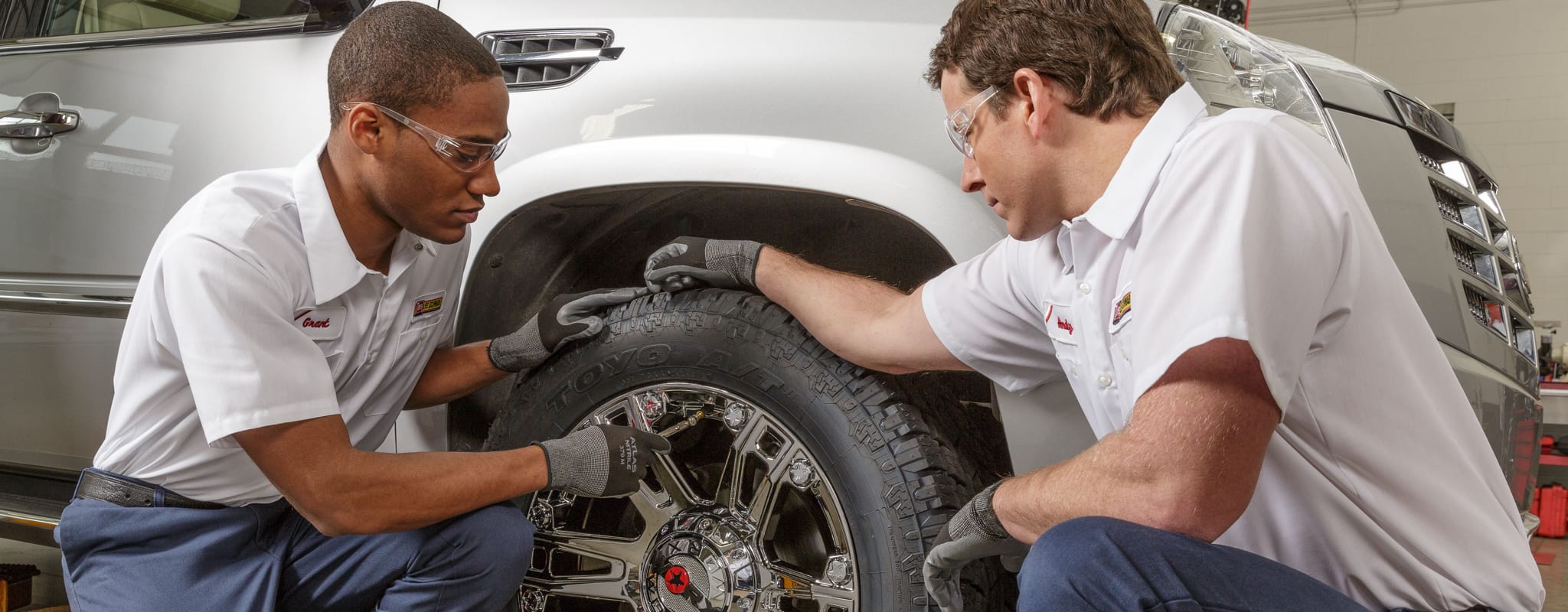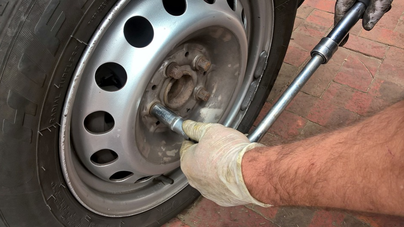Tire Service: The Impact of Weather
When it pertains to ensuring ideal performance and safety and security when traveling, recognizing the impact of weather conditions on tire service is critical. From scorching warm to icy roads, each weather aspect can dramatically influence tire functionality and total driving experience. By delving right into the results of differing climate condition on tires, chauffeurs can gain useful understandings that may boost their automobile's performance and longevity. In this conversation, we will explore the elaborate partnership between weather condition conditions and tire service, clarifying the relevance of weather-specific tire upkeep techniques and factors to consider.
Warmth and Tire Efficiency
When subjected to high temperatures, tires experience changes in performance that can dramatically influence automobile safety and handling. The heat produced from prolonged driving or heat conditions causes the tire rubber to soften, bring about lowered tread life and raised wear. As the rubber becomes softer, the tire's hold when driving diminishes, impacting stopping ranges and total traction. In extreme cases, excessive warmth can even create tire blowouts, presenting a serious safety and security danger to the automobile and its occupants.

Cold Weather Condition Effects
Cold weather condition conditions can have a considerable influence on tire performance and security. As temperatures drop, tire rubber can solidify, bring about decreased grip on icy or snow-covered roads. In cold weather condition, tires may additionally shed atmospheric pressure a lot more swiftly, which can affect handling and fuel performance. Additionally, cold temperature levels can create tire sidewalls to tense, increasing the risk of damages from potholes or other road threats.
To alleviate the results of winter on tires, it is critical to on a regular basis inspect tire pressure and inflate them to the maker's advised degrees. Making use of winter or all-season tires made for winter problems can additionally boost traction and grip on icy or snowy roads. Appropriate tire maintenance, consisting of regular inspections for wear and damages, ends up being a lot more critical during chillier months to make sure optimal efficiency and safety and security.
Rainy Conditions Impact
Tires with worn-out footsteps are extra vulnerable to hydroplaning, where a layer of water builds up between the road and the tire surface area, leading to loss of grip. To combat this, vehicle drivers ought to consistently examine their tires for appropriate step depth and consider spending in tires especially created for damp conditions.
Moreover, stormy weather can also decrease exposure, making it challenging for drivers to see the roadway ahead clearly (GMC Tire Service). In such problems, it is necessary to change driving speeds accordingly and preserve a secure complying with range to permit for sudden quits. Correctly filled with air tires can also aid in maintaining control on wet my latest blog post roads by providing much better handling and grip
Snow and Tire Safety And Security
Snow-covered roadways posture one-of-a-kind challenges for chauffeurs, highlighting the relevance of appropriate tire choice and maintenance. When driving in snowy problems, having the appropriate tires can make a significant distinction in security and performance. Wintertime tires are made with unique rubber substances and tread patterns to offer better grip on snow and ice compared to all-season tires. The much deeper treads and sipes of winter months tires aid hold the road better, lowering the danger of sliding and sliding.

Moreover, chauffeurs should think about mounting tire chains in severe snowy conditions. Tire chains offer extra traction by grasping the snow and ice, boosting stability and control. Nonetheless, it is necessary to follow manufacturer guidelines when making use of and installing tire chains to protect against damages to the tires and automobile. By choosing the appropriate tires, preserving appropriate rising cost of living, and considering additional grip aids like tire chains, vehicle drivers click this can boost their safety when browsing snow-covered roadways.
Weather-Related Tire Maintenance
Weather-related tire upkeep includes an array of techniques aimed at guaranteeing ideal tire feature and durability in various weather situations. One crucial element of weather-related tire upkeep is tire pressure guideline. Evaluating tire walk routinely and replacing tires when step wear gets to a certain deepness is vital for preserving traction and security in negative weather condition.
Verdict
In conclusion, climate conditions have a significant impact on tire efficiency this link and safety and security. From warmth affecting tire stress and put on to cool weather lowering grip, it is necessary to consider the climate when preserving and utilizing tires.
In this conversation, we will discover the intricate relationship between climate conditions and tire service, losing light on the importance of weather-specific tire maintenance practices and considerations.
